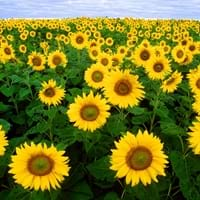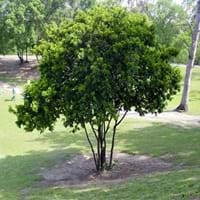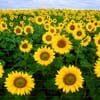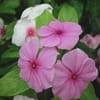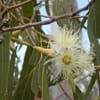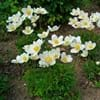Life Span
Annual
Perennial
Type
Flowering Plants
Tree
Origin
North America
Mexico, Caribbean, Central America
Types
Helianthus annuus, Heliantheae,
Not Available
Number of Varieties
Not Available
Habitat
Dry areas, Open areas, Prairies
Clay soil areas, Forests, open Woodlands, Sandy areas, Well Drained
USDA Hardiness Zone
3-10
10-15
Sunset Zone
A1, A2, A3, H1, H2, 1a, 1b, 2a, 2b, 3a, 3b, 4, 5, 6, 7, 8, 9, 10, 11, 12, 13, 14, 15, 16, 17, 18, 19, 20, 21, 22, 23, 24
H2, 24
Habit
Upright/Erect
Oval or Rounded
Flower Color
Brown, Yellow
Yellow, Lemon yellow
Flower Color Modifier
Bicolor
Bicolor
Fruit Color
Black, Chocolate, Ivory
Dark Salmon, Sienna
Leaf Color in Spring
Dark Green, Green
Dark Green
Leaf Color in Summer
Green
Dark Green
Leaf Color in Fall
Green
Dark Green
Leaf Color in Winter
Not Available
Dark Green
Plant Season
Summer
Fall, Winter
Sunlight
Bright direct sunlight
Full Sun, Partial Sun
Growth Rate
Very Fast
Medium
Type of Soil
Dry, Light, Well drained
Loam, Sand
The pH of Soil
Acidic, Alkaline
Neutral, Alkaline
Soil Drainage
Well drained
Well drained
Bloom Time
Early Fall, Early Summer, Fall, Late Spring, Late Summer, Summer
Late Fall, Early Winter, Winter, Late Winter
Tolerances
Not Available
Drought, Salt
Where to Plant?
Container, Ground, Pot
Ground
How to Plant?
Seedlings
Seedlings
Plant Maintenance
Medium
Medium
Watering Requirements
Keep the ground moist but not water-logged, Requires regular watering, Requires watering in the growing season
Do not let dry out between waterings, Requires consistently moist soil
In Summer
Lots of watering
Lots of watering
In Spring
Moderate
Moderate
In Winter
Average Water
Average Water
Soil pH
Acidic, Alkaline
Neutral, Alkaline
Soil Type
Dry, Light, Well drained
Loam, Sand
Soil Drainage Capacity
Well drained
Well drained
Sun Exposure
Bright direct sunlight
Full Sun, Partial Sun
Pruning
Prune ocassionally, Requires little pruning
Prune up lowest branches, Remove branches, Remove damaged leaves, Remove dead branches, Remove dead leaves, Remove dead or diseased plant parts
Fertilizers
All-Purpose Liquid Fertilizer
All-Purpose Liquid Fertilizer
Pests and Diseases
Alternaria leaf blight, Apical chlorosis, Bacteria wilt, Bacterial leaf spot, Botrytis head rot, Charcoal rot, Crown gall, Downy mildew, Erwinia stalk rot, Fusarium stalk rot, Fusarium wilt, head rot, Phialophora yellows, Stem spot
Red blotch
Plant Tolerance
Drought
Drought, Salt
Flower Petal Number
Single
Single
Fragrant Bark/Stem
No
Yes
Foliage Texture
Coarse
Fine
Foliage Sheen
Matte
Glossy
Attracts
Birds, Butterflies
Butterflies
Allergy
Runny nose, Red eyes, Watery eyes, Sore eyes, Itchy eyes
Headache, Nausea, Skin irritation, Swelling
Aesthetic Uses
Beautification, Bouquets, Showy Purposes, Used for decorating walls, fences, gates, hedges, etc.
Not Used For Aesthetic Purpose
Beauty Benefits
Not Available
Good for skin
Environmental Uses
Air purification
Air purification, Nesting sites for birds, Shadow Tree, Shelter for wildlife, Wildlife, Windbreak
Medicinal Uses
Pulmonary afflictions
Diarrhea, Digestion problems, Dysentry, Pulmonary hemorrhage, Skin Disorders, Soothing and relieving pain, Stimulates menstruation, Ulcers, Urinary problems, Wounds
Part of Plant Used
Flowers, Seeds, Stem
Bark, Seeds, Wood
Other Uses
As Fertilizers, Economic Purpose, Oil is used in perfume, soaps, creams, etc., Showy Purposes, Used As Food, Used as Ornamental plant, Used for producing cooking oil
Carvings, Used as firewood, Wood is used in construction, Wood log is used in making fences
Used As Indoor Plant
Yes
No
Used As Outdoor Plant
Yes
Yes
Garden Design
Bedding Plant, Bonsai, Container, Edging, Edible, Feature Plant, Houseplant, Vegetable
Feature Plant, Foundation, Mixed Border, Rock Garden / Wall, Screening / Wind Break, Tropical
Botanical Name
Helianths Annuus
CAESALPINIA echinata
Common Name
Sunflower
Brazilwood, Indian Savin Tree, Peachwood
In Hindi
Sūrajamukhī
Brazilwood Tree
In German
Sonnenblume
Brasil Baum
In French
Tournesol
Brazilwood Arbre
In Spanish
Girasol
Árbol de palo de brasil
In Greek
ηλιοτρόπιο
brazilwood Δέντρο
In Portuguese
Girassol
Árvore de pau-brasil
In Polish
słonecznik
brazylijskich Drzewo
In Latin
Helianthus
Brazilwood ligno
Phylum
Magnoliophyta
Magnoliophyta
Class
Magnoliopsida
Magnoliopsida
Family
Asteraceae
Fabaceae
Genus
Heilanthus
Caesalpinia
Clade
Not Available
Angiosperms, Eudicots, Rosids
Tribe
Heliantheae
Caesalpinieae
Subfamily
Helianthodeae
Caesalpinioideae
Number of Species
Not Available
Importance of Sunflower and Brazilwood
Want to have the most appropriate plant for your garden? You might want to know the importance of Sunflower and Brazilwood. Basically, these two plants vary in many aspects. Compare Sunflower and Brazilwood as they differ in many characteristics such as their life, care, benefits, facts, etc. Every gardener must at least have the slightest clue about the plants he wants to plant in his garden. Compare their benefits, which differ in many ways like facts and uses. The medicinal use of Sunflower is Pulmonary afflictions whereas of Brazilwood is Diarrhea, Digestion problems, Dysentry, Pulmonary hemorrhage, Skin Disorders, Soothing and relieving pain, Stimulates menstruation, Ulcers, Urinary problems and Wounds. Sunflower has beauty benefits as follows: Not Available while Brazilwood has beauty benefits as follows: Not Available.
Compare Facts of Sunflower vs Brazilwood
How to choose the best garden plant for your garden depending upon its facts? Here garden plant comparison will help you to solve this query. Compare the facts of Sunflower vs Brazilwood and know which one to choose. As garden plants have benefits and other uses, allergy is also a major drawback of plants for some people. Allergic reactions of Sunflower are Runny nose, Red eyes, Watery eyes, Sore eyes and Itchy eyes whereas of Brazilwood have Headache, Nausea, Skin irritation and Swelling respectively. Having a fruit bearing plant in your garden can be a plus point of your garden. Sunflower has no showy fruits and Brazilwood has showy fruits. Also Sunflower is flowering and Brazilwood is not flowering . You can compare Sunflower and Brazilwood facts and facts of other plants too.
